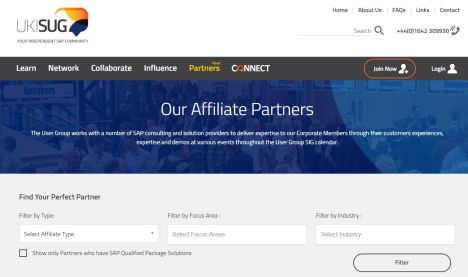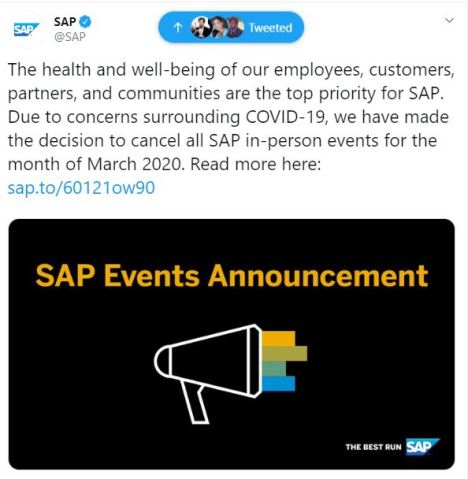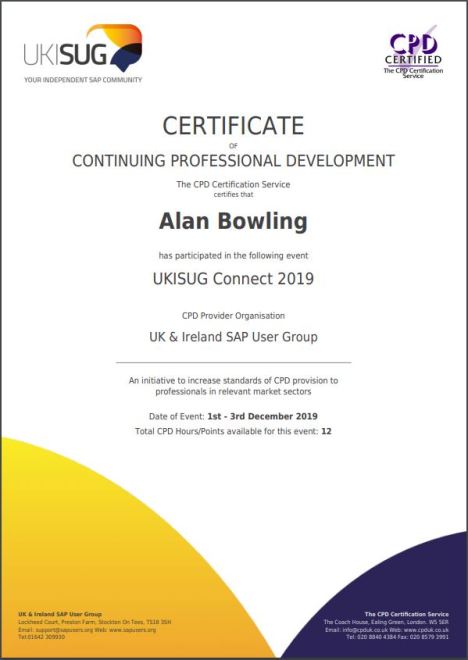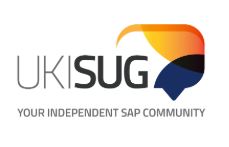At the request of User Group I’ve started a series of Blogs trying to share some of my experiences from 20+ years of involvement with SAP and IT. My first can be found here.
For ease I’ve also reproduced it here.
Transformation is THE word
We’re in an era of transformation according to all the purveyors of digital solutions. Transformation means change, revolution, conversion, renovation or, in reality, all four of them together.
Let’s talk SAP and digital transformation. There’s a huge amount of change being promoted, that combines both revolution and renovation. We’ll skip the conversion and renovation bits for the moment.
So what is the SAP revolution? It started maybe 10 years ago with SAP’s development of its own database – HANA. This allowed different concepts to be explored and led to S/4HANA (SAP for HANA) which allowed the concept of data updates (changes) to be removed and just work with inserts (new data) and no intermediate tables. And the core of SAP starts to be rewritten…
But let’s just step further back for a moment.
Back in 1975, Xerox passed on software to IBM that resulted in Xerox financial systems being deployed on IBM hardware. This software (Scientific Data Systems (SDS)/SAPE software) was what the original founders of SAP were working on. Their first customer, after the founding of SAP, was the British chemical giant ICI. But all this was based on mainframe computing. However, by the mid 90’s, SAP R3 (Major Release 3 of SAP) became available utilising client-server technology.
So why the history lesson? Well because anyone designing the software in that era is 30+ years older now. Yes, the core of (original Pre S/4HANA) SAP is at least 30 years old, and in reality some parts much older still. So hold on to that fact for the moment.
Away from SAP, some other big technology-wide changes have taken place. The cloud (a massive change not to be discussed in detail today), and advances in wireless and fibre connectivity have increased the ability to transfer data literally anywhere and have led to the creation of low-cost location focused IT operations providing IT as a service. The world all of a sudden has become very small.
SAP now and in the future
SAP today is in the midst of the transformation – becoming a cloud-centric sole solution provider to customers worldwide. Indeed so much so, that SAP has announced its own internal transformation that will cost the best part of €1 billion. At its investor event this February, SAP clearly stated that it was offering early retirement options to several thousand of its employees, in what is described as a graceful retirement. Remember the history lesson? Who is most likely to retire early? Well in the main, those of a more mature age, likely those associated with the original product. So, what does this mean for the many SAP customers still working on-premises, using that original software?
Well firstly, don’t just sit there expecting that this “revolution” will go away. I’m going to call it a revolution because the changes in the land of digital are so all-encompassing that this 21st Century revolution is so big as to mirror the original Industrial Revolution of the 19th Century in terms of impact.
Secondly, SAP has been very clear and responsible by giving plenty of notice that SAP Original will be going into hibernation from 2025. By then the original code will be around 40 years old, and even if the original staff have not retired gracefully, they will likely be retired anyhow. I know people talk about continuing with their current solutions post 2025… my advice would be to make sure you have done your comprehensive risk analysis, not just of the software in question, but also the needs of the future as defined by the business, not IT. I think I know what the answer and outcome will be…
Thirdly, I mentioned conversion and renovation. I’ll use a simile for this – the advent of the electric car. They are coming to our streets…faster and faster, literally. By 2040, no new cars with just ICE (Internal Combustion Engines) will be sold in the UK by government decree. This means running ICE cars in the future will become less attractive, especially as parts and servicing will decrease in availability as focus moves to lower maintenance electric vehicles. Petrol and diesel outlets will also be replaced by more and more home charging and public charging points. Some say that the big oil companies will not let this happen…when in fact, they are now helping it. In the UK, Shell Recharge now has 1,175 Shell Recharge points and BP’s acquisition of Chargemaster in 2018 makes it the biggest provider of home charging points as well as the largest public charger network in the UK.
Trying to convert what you have or keep it going is not going to make the grade and the same practice applies for organisations’ IT solutions in the future.
SAP users should be no different – you have to transform how you work and what you are – to at least keep up; but if you get onboard, you can play your full part in the digital revolution.
Filed under: SAP | Comments Off on Blogs for the UK and Ireland SAP User Group: Musings on SAP







